This weekend presents a rare opportunity to see artwork by Cris Kocher, a prolific yet private artist and longtime Athenian who led a fascinating life. An exhibition and silent auction of paintings will be held at The Athenaeum, located at 287 W. Broad St., on Saturday, Dec. 14 and Sunday, Dec. 15 from 2–5 p.m. A small reception will close out the weekend on Sunday from 3–5 p.m. with the auction closing at 4:30 p.m. that day. A portion of proceeds will be donated to Nuçi’s Space.
Below, read a biography on Kocher written by Annelies Mondi, interim director and chief curator at the Athenaeum, who organized the exhibition with Paul Butchart.








Cris Kocher’s unassuming demeanor and increasing reclusiveness belied a life filled with music, passion, and artists. He endlessly pursued creative activities—painting, sculpting, photography, piano, poetry, and writing music and fictional stories—and his interest in a broad spectrum of literary, visual, and performing arts and keen observations of pop culture endeared him to cultural icons he encountered in Georgia and New York. Though he exhibited widely in the 1980s and early 1990s, his art remained largely hidden in more recent decades as he withdrew from society. This accomplished body of work, though, provides an opportunity to learn more about his enigmatic character and attests to him having what his friend and co-worker Serra Jagger described as “a rich inner life.” Viewing Kocher’s paintings feels like a secret peek into his hidden world.
Born Crist Haist Kocher in Pennsylvania in 1947, the son of Isabelle and Ned Kocher and brother of Garth and Ben, he moved with his family to Columbus, Georgia, when he was a year old. He expressed a love of art from a young age and was recognized for his talent. He received prizes in coloring contests run by the local newspaper in 1957 (winning second place and having his photograph published) and 1959, a first prize for a Nativity painting in 1960, and a first prize for a landscape in 1961.
In 1965, Kocher moved to Athens to attend the University of Georgia where he studied painting. During his first year at UGA he lived in a dorm and rarely socialized. Like many people his age, Kocher was trying to “figure out who and what he was;” as part of that search, he read works by gay authors such as André Gide, Jean Genet, W. H. Auden, and Christopher Isherwood, recalling in an interview in 2019, “They were guides for me because they were successful, they were accepted.”
In the mid-1960s, UGA’s art department included both conservative professors who had been at the school for decades as well as some younger professors who Kocher felt were “hip to what was going on in the world.” One of Kocher’s favorite professors was Jim Herbert, a painter and filmmaker whom he described as “cool about everything.” Herbert, who is best known for his music videos of the band R.E.M. in the 1980s, lived in a large, historic home on Dearing Street that was a center of creative activity from the 1960s through the 1980s. For a year and a half, Kocher lived in a closet under the stairs there. Though he never quite fit in at UGA—for example, he wore his hair long well before that was common in Georgia and refused to carry a gun while participating in the required ROTC training—he did begin to find his niche during his second year of college.
In 1966, Kocher met fellow art student Jeremy (then Jerry) Ayers (1948-2016), and they later became a couple, an important relationship that lasted for more than a decade. The two moved in together and shared a basement apartment in a house on Georgia Avenue. Kocher described their first five years as “a dream come true” and Ayers as “so beautiful.” While Kocher did not often talk about the social challenges of his sexuality, being openly gay in Georgia in the mid-1960s carried the risk of being arrested, beaten, or worse.
Kocher enjoyed diverse musical interests including classical, jazz, and “offbeat” or avant-garde music; while in college he amassed an impressive LP collection that piqued the interest of local high school students Ricky Wilson and Keith Strickland, both of whom Kocher and Ayers befriended. He introduced these and other teenagers (like Owen Scott and Roy Bell) to the music of Frank Zappa, Captain Beefheart, and Soft Machine. It was through Kocher and Ayers that Wilson met Kate Pierson, who was living on a farm outside of Athens; Pierson, Wilson, Wilson’s sister Cindy, Strickland, and Fred Schneider went on to found the B-52s in 1976. While there was not much of a music scene in Athens in the late 1960s, Kocher and Ayers found ways to enjoy live music, including attending concerts in Atlanta and hitchhiking to the Atlantic City Pop Festival in New Jersey, seeing legendary performers like Jimi Hendrix, Jefferson Airplane, B. B. King, the Byrds, the Chambers Brothers, Janice Joplin, and Santana.
In the summer of 1970, after Kocher and Ayers graduated from UGA and after they felt they would not be drafted to Vietnam (the draft procedure at the time involved a lottery system and both had received high numbers, making it unlikely that they would be called), the couple moved to New York. Kocher considered New York City “the mecca” for artists, and he had long been intrigued by the artist and film director Andy Warhol. Back in Georgia, Kocher and Ayers had seen Warhol’s film Chelsea Girls (1966), and the couple moved to the city “with the idea of living in the Chelsea Hotel and getting to know some of these wild people and see what was going on.” Ultimately, they moved into the more affordable Hotel Albert in Greenwich Village, though they still encountered many wild people. They met the singer, poet, and artist Patti Smith at the Poetry Project at St. Mark’s Church, a program founded in 1966 to support new and experimental poetry. They also became friends and later roommates with Holly Woodlawn, a transgender actress featured in the opening lines of Lou Reed’s song “Walk on the Wild Side” (“Holly came from Miami, F.L.A./Hitchhiked her way across the U.S.A./plucked her eyebrows on the way/Shaved her legs and then he was a she”). Woodlawn brought Kocher and Ayers to the Factory, Warhol’s studio at Union Square West. She was instrumental in introducing them to many New York celebrities including, at the opening party for Jesus Christ Superstar at the Tavern on the Green, Tennessee Williams, a childhood icon of Kocher’s. They also met the illustrator Edward Gorey, whom Kocher described as a “sweet guy;” costume designer, actor, and filmmaker, Jack Smith, best known for his camp film Flaming Creatures (1963); and Warhol superstars Candy Darling, a transgender actress who worked at the Factory answering the telephone, and Jackie Curtis, whose drag look inspired many glam rock performers.
During these early years in New York, Ayers also became a Warhol superstar, as the androgenous persona Sylva Thinn, inspired in part, according to Kocher, by Kocher’s interest in Marlene Dietrich. Ayers and Kocher liked the layered aspect of a man dressing up as a woman, dressing up as a man. Kocher was fascinated with Warhol’s use of repetitions, multiples, and facsimiles, and, as part of a self-described “art project,” created a “facsimile Warhol.” He bleached and cut his hair like Warhol’s and wore a leather jacket, sunglasses, and blue jeans— standard Warhol dress at the time. Kocher found it amusing to create and become a living copy of Warhol–a true expression of life imitating art.
Kocher expressed his artistic ideas through writing plays as well. He liked the Theatre of the Ridiculous—a genre of experimental theatre that began in 1965 and encouraged queer and camp elements—and wrote a play in that style based on the life of Aimee Semple McPherson, a controversial Pentecostal evangelist and radio celebrity in the 1920s and 1930s. He decided not to go through with the production, though. After Ayers was beaten up in the city in an attack they believed was based on homophobia, the two moved back to Athens in late 1974 or early 1975. They eventually settled together into a house (owned by Ayers’s mother) that, like so many older homes in Athens, had been divided into apartments. It is in this duplex apartment that Kocher lived for the rest of his life.
Athens grew and changed while Kocher and Ayers were away, and they returned to expanded musical and gay scenes. The local college radio station, WUOG, made its first broadcast in 1972 and, like many other college stations, promoted small record labels. This in turn brought about a proliferation of bands that led to more music venues opening. Also, inspired by the Stonewall Uprising in New York in 1969, activists in Athens began to advocate for LGBT acceptance. Students formed the Committee on Gay Education in late 1970 and, in early 1971, hosted the first gay dance to be held at a Southeastern university. According to Kocher, “the gay scene got real sexy in the 70s….Everyone was trying to be outrageous.”
Ayers’s reputation as an artist, musician and writer began to grow. He co-authored “52 Girls” from the 1979 debut album of the B-52s and “Old Man Kensey” from R.E.M.’s 1985 album Fables of the Reconstruction and was a close friend of Michael Stipe. As Ayers became more prominent, Kocher receded from the scene. Ayers and Kocher’s relationship ended, though they continued to live together in different sides of the duplex for at least a decade.
The Meigs Street house was a refuge for many creatives. Kocher and Ayers allowed people to live on the porch, in the utility room, and in the treehouse in the backyard (built around 1988). After Ayers moved into a house around the corner, local poet and historian John Seawright moved into his side of the house and stayed until his death in 2001.
Kocher began working at the Taco Stand in October 1977 (six months after it opened) and remained there for the next forty-two years, until his death. He soon settled into a simple routine of riding his bike to work, bringing his own food to work even though he could eat at the Taco Stand for free, drinking yerba matte, doing without a phone or a car, gardening, doting on his cats, collecting books and magazines, and listening to public and college radio.
During the 1980s and 1990s Kocher focused intently on painting. He started participating in group shows in 1981, and over the next twelve years his work was included in more than 145 exhibitions across the nation, and he won at least 100 awards. He received an Individual Artist Grant from the Georgia Council for the Arts in 1992, and, in 1993, the Tate Center Gallery at UGA presented a solo exhibition of his, as described in the Red and Black, “sharp focus realist oil paintings.” Surviving correspondence indicates that he had work at the Owen Gallery on Madison Avenue in New York in 1995 and Samson Fine Arts, Inc. on Fifth Avenue in 1996, though he likely had stopped participating in exhibitions by this time.
After the mid-1990s, few people saw Kocher’s paintings, as he had grown increasingly private about his art. His friend and neighbor Paul Butchart only realized the extent of his work around 2018 after he entered the home to repair a floor that had collapsed under the weight of an extensive accumulation of books. Butchart thought the paintings were “fantastic,” and was immediately intrigued. He encouraged Kocher to show them in an exhibition, but Kocher was more interested in his solitary pursuits. According to Jagger, Kocher “was not looking for a reaction to his paintings. He had things to convey to the world but did not need a response.”
Many of Kocher’s paintings possess a mysterious quality and hint at a narrative just beyond our knowing. Kocher rarely dated his work, and it is unclear if he continued painting after the mid-1990s. His style generally progressed from monochromatic photorealist works in college to colorful figurative and often surrealistic works later on. He admired artists such as the Russian painter and art theorist Wassily Kandinsky and the American painter Paul Cadmus. His frequent depiction of male figures in surreal settings and use of classical elements suggest the influence of the American Magic Realism Movement (which often embodied feelings of alienation and isolation associated with the modern era) and its members such as George Tooker and Jared French. Occasionally Kocher employed humor or visual puns like in the work Hey, Piet!, where he used primary colors in the depiction of ordinary objects (a blue vase with a red flower and a yellow ceramic piece) set against a geometric black and white background, referencing Piet Mondrian’s 1930 painting Abstraction with Red, Blue and Yellow.
Several self-portraits survive; a couple of early ones show him staring directly out, while in later ones where he has his back to the viewer. In one intriguing self-portrait, he portrays himself through a selection of books on narrow shelves, with titles including Student, Heresy, Gemini, Cats, Flora, Masks, Memory, Gender, Lust, Body, and Death.
In 2014, Kocher was involved in an accident with a car while he was riding his bicycle on Milledge Avenue. His health quickly deteriorated; his speech became halting, his voice raspy, and he walked with difficulty. He died on August 15, 2019. His paintings and other belongings remained in the house on Meigs Street (then owned by Laura Carter) for a year and a half until Butchart acquired them with the hopes of preserving Kocher’s memory and introducing his talent to a wider audience. Kocher’s remains are buried in a pauper’s field on Nowhere Road.
Cris Kocher was a complicated figure. Intelligent, creative, and curious, Kocher became the true epitome an Athens character. He was intimately involved in the artistic history of Athens and helped shape the early years of the city’s renowned music scene. Many people knew him, but few knew him well, particularly in his later years. These paintings are his legacy and give us a glimpse into the life of an enigmatic individual who, according to his friend and co-worker Kurt Wood, “led the life he wanted to live.”
—Annelies Mondi
With appreciation to the following people who shared their memories of Cris Kocher: Paul Butchart, Kurt Wood, Owen Scott, Roy Bell, and Serra Jagger.
Like what you just read? Support Flagpole by making a donation today. Every dollar you give helps fund our ongoing mission to provide Athens with quality, independent journalism.










